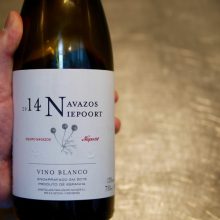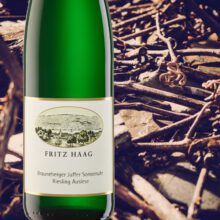
Product information
Equipo Navazos Navazos-Niepoort Vino Blanco 2014
$57
Description
Spain has once again been able to bend my mind with a delicous, fine, perfrumed fresh, salty, elegant and harmoniouse wine with incredible peristence. Such a fine elegant wine of incredible sophistication. Of the two white table wines produced by Equipo Navazos, it is perhaps the more perfumed and elegant. It takes the long history of the region, adding a twist, that in many ways takes it back to it’s origins to produce something truly beautiful. You can learn more about Equipo Navazos and their search for excellence in the Wine Bites Mag Article “Equipo Navazos a wine La Botamay. Literally Mind Blowing Wine.”
Out of stock






You must be logged in to post a comment.